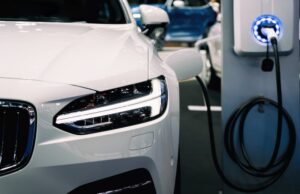HOW ARE ELECTRIC CAR BATTERIES MADE?
Contrary to what one might think, electric cars did not appear ten years ago at the instigation of the legislator. Long before the advent of the thermal car, some had already considered the electric car. In this regard, for the record, the first car to have exceeded 100 km / h is not a thermal model, but an electric model , “The never happy”, in 1899. A car powered by an electric block powered by a lead battery, a type of battery that we no longer find in our modern cars today, at least to provide traction.
Lead batteries are now used simply to power the electrical circuit of accessories or equipment specific to the thermal world such as the starter for example. Why are they not used on our electric cars? Quite simply because it only offers a limited capacity despite a size and a fairly substantial weight.
Nevertheless, this type of battery has at least the merit of being both economical and simple to produce or recycle. If they are still used in modern thermal cars, they obviously no longer have to be in our current electric cars which use much more efficient storage devices . The fact remains that the lead battery powered some electric cars until the 80s, or even 90s with the EV1 from General Motors or the electric Citroën AX.
The never happy
Never happy, the first car to have reached the 100 km/h mark.
WHAT ARE THE COMPONENTS OF A BATTERY?
When it comes to the batteries of our modern cars, there is no longer any question of hearing about lead-acid batteries, since they all use lithium-ion batteries . The lithium-ion battery is no longer very young since it was marketed in 1991 by Sony . It was primarily intended for the consumer electronics sector. Quickly, because of its capabilities, it interferes in new devices that need a rechargeable and portable battery.
HOW DOES A LITHIUM BATTERY WORK?
The principle of operation of a lithium-ion battery is quite simple in itself. It consists of circulating electrons by creating a potential difference between two electrodes , one negative and the other positive, immersed in an ionic conductive liquid called the electrolyte. When the battery powers an element, in this case an electric motor for our cars, the electrons accumulated in the negative electrode are released through an external circuit to reach the positive electrode . This is called the discharge phase.
If there is a discharge phase, there is quite logically also the reverse: the charge phase. This is the action performed when you charge your battery , the energy transmitted by the charger causes the electrons to return from the positive electrode to the negative.
To go further
Electric cars: what types of sockets are compatible?
But why are these batteries called “lithium-ion”? On the same principle of the lead-acid battery, it is obviously from the technology used that the battery takes its name . The different types of batteries vary in the type of ions, electrode materials and associated electrolyte. For example, in a lead battery, we find an electrolyte containing lead ions and lead-based electrodes. In a lithium-ion battery, we find lithium ions (Li+).
WHAT ARE THE COMPONENTS OF A LITHIUM BATTERY?
The lithium-ion battery that makes up our current vehicles is presented as an assembly of individual battery units also called cells . These cells are connected to each other and supervised by an electronic circuit. They are obviously decisive since their number, the size of each cell and the way they are arranged determine both the voltage delivered by the battery and its capacity. The capacity being the amount of electricity it is able to store. This is the data expressed in kWh in the automotive world


